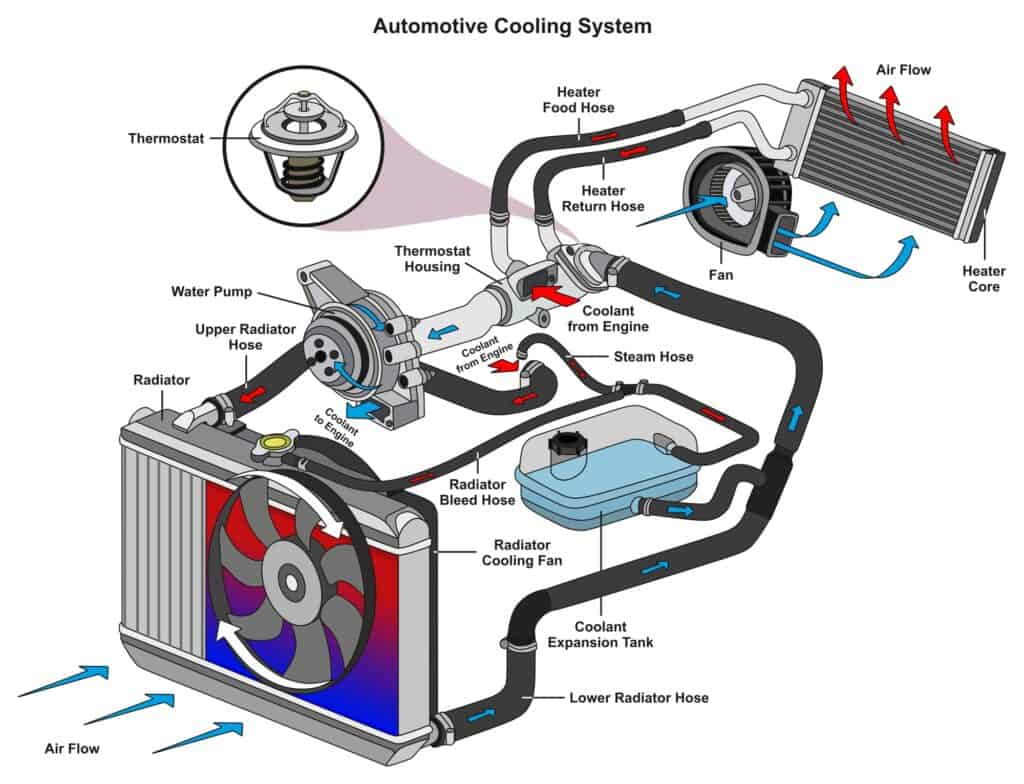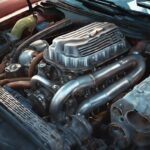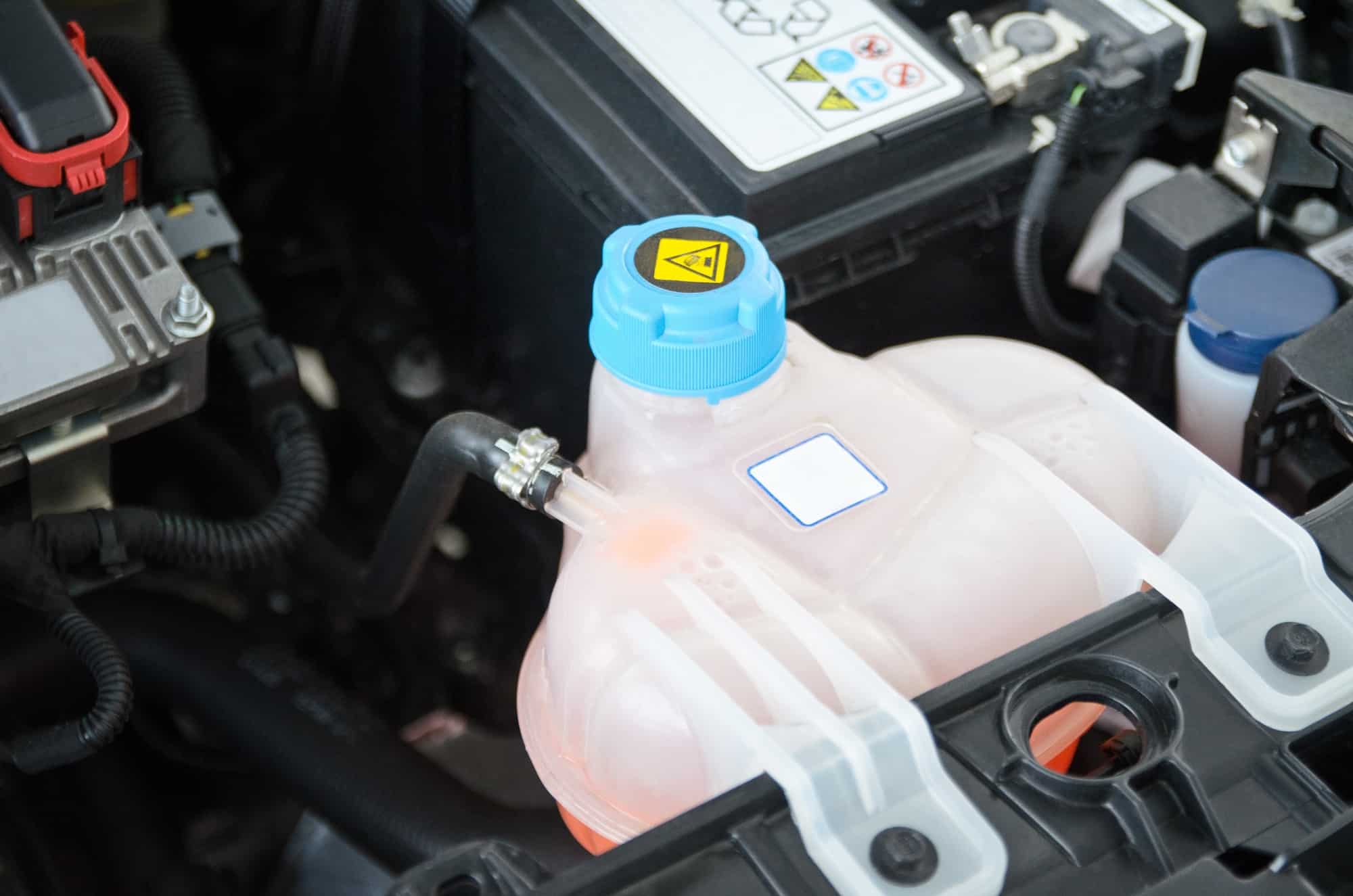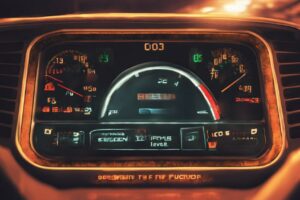As a car owner, coolant overflow from the reservoir is not something you want to see. The coolant reservoir, also known as the overflow tank, is an important part of the engine’s cooling system as it stores excess coolant that is not needed by the engine and releases it back into the system when the engine cools down.
However, if the coolant is overflowing from the reservoir, it can indicate a problem with the cooling system that should be addressed promptly.
Some of the common causes of this issue, include a faulty radiator cap, a damaged thermostat, a clogged radiator, or a blown head gasket. Some of the symptoms of coolant overflow can include engine overheating, poor engine performance, and a sweet smell from the exhaust.
As an Amazon Associate we earn from qualifying purchases.
A Brief Overview of a Coolant Overflow Reservoir and Its Function
A coolant overflow reservoir, also known as a coolant recovery tank is a small plastic or metal container that is attached to the radiator or the engine block and is part of the engine coolant system. The primary function of the coolant overflow reservoir is to collect and store excess coolant fluid that expands when heated.
When the engine is running, the coolant fluid circulates through the engine block and the radiator to keep the engine from overheating. As the coolant absorbs heat from the engine, it expands and increases in volume.

The excess coolant fluid flows into the coolant overflow reservoir via a small hose. As the engine cools down, the coolant fluid contracts, and the vacuum created in the cooling system pulls the coolant fluid back into the engine.
The coolant overflow reservoir serves two main purposes. Firstly, it prevents the loss of coolant fluid due to overflow. Without the coolant overflow reservoir, the excess coolant fluid would spill out of the radiator and onto the ground, leading to a loss of coolant and potential engine damage.
Secondly, it maintains the optimum pressure in the engine’s cooling system. This is inportant because if the pressure inside the cooling system exceeded the specified limit, it can cause the engine to overheat, leading to costly repairs.
Causes of Coolant Overflow
There are several reasons why coolant may overflow from the reservoir. Here are some of the most common causes:
Cause 1. Engine Overheating
When the engine overheats, the pressure in the cooling system increases, causing the coolant to expand and possibly overflow from the reservoir. Overheating can be caused by a variety of issues, such as a clogged radiator, a faulty thermostat, or a damaged water pump.
An overheating engine can also cause the coolant in the engine to boil and evaporate, which can cause the coolant level to drop. As the engine cools down, the coolant may be drawn back into the reservoir from the coolant system. A blown cylinder head gasket can allow gas to leak from the engine cylinders into the cooling ducts of the engine block forcing coolant back into the reservoir. If the coolant level in the reservoir is too high, it can cause the excess coolant to overflow from the reservoir.
Cause 2. Coolant Leaks
Coolant leaks can occur in various parts of the cooling system, such as the radiator, hoses, water pump, or head gasket. When coolant leaks out of the system, the level in the reservoir drops, causing the engine to overheat.
The remaining coolant can overflow from the reservoir if it is forced back in by combustion gases that have found their way into the cooling channels of the engine. Identifying and fixing the source of the leak is crucial to prevent further coolant loss and potential engine damage.
3. Clogged Radiator
A clogged radiator can cause coolant to overflow from the reservoir. When the radiator is clogged with debris or stops working efficiently, it won’t be able to handle the heat generated by the engine, leading to an accumulation of pressure within the cooling system.
As a result, coolant will be forced back into the overflow tank and if there is too much pressure it will eventually overflow.
If the radiator is clogged, it can prevent the proper flow of coolant between the radiator back to the engine, which can cause the engine to overheat and potentially lead to coolant overflow from the reservoir as described earlier.
Symptoms of a clogged radiator may include overheating, poor engine performance, or a sweet smell from the exhaust.
4. Cracked or Damaged Head Gasket
A damaged head gasket can cause coolant to overflow from the reservoir. Just like an overheating engine, when the head gasket is damaged, it can allow combustion gases to enter the engine’s cooling system, which can cause a build-up of pressure and force coolant back into the reservoir, leading to coolant overflow.
A damaged head gasket can cause serious damage to the engine and other components, and can potentially lead to engine failure. Symptoms of a damaged head gasket may include white smoke from the exhaust, a sweet smell from the exhaust, or a loss of coolant without any visible external leaks
5. Faulty Thermostat
A faulty thermostat can also cause coolant to overflow from the reservoir. The thermostat is responsible for regulating the flow of coolant through the engine’s cooling system. If the thermostat is stuck in the closed position, it will prevent coolant from flowing through the system, which can cause the engine to overheat and potentially lead to coolant overflow from the reservoir. I
A faulty thermostat will almost always cause the engine to run too hot, which can damage the engine’s gaskets and seals, leading to leaks and further coolant loss.
Symptoms of a faulty thermostat may include overheating, poor engine performance, or a sweet smell from the exhaust if the head gasket has been damaged.
6. Faulty Water Pump
The water pump circulates coolant through the engine, and a faulty water pump can cause coolant to stop flowing, resulting in overheating and coolant overflow from the reservoir.
A faulty water pump can cause leaks and loss of coolant if the internal bearings are worn out or if the water pump gasket is leaking. This can also lead to engine overheating and a loss of coolant from the reservoir if oil or combustion gases get into the coolant system causing an increase in pressure.
Signs of a faulty water pump include coolant leaks and unusual noises coming from the engine.
7. Damage Radiator Cap
A damaged or faulty radiator cap can cause coolant to overflow from the reservoir. The radiator cap is responsible for maintaining the correct pressure in the engine’s cooling system.
When the engine heats up, the coolant expands and creates pressure in the cooling system. The radiator cap is designed to release excess pressure by allowing coolant to flow into the reservoir. When the engine cools down, the pressure in the cooling system decreases, and the radiator cap is supposed to prevent coolant from flowing back into the engine.
If the radiator cap is damaged or faulty, it may not be able to maintain the correct pressure within the system, which can force coolant back into the reservoir when the engine is hot causing it to overflow.
What Are The Negative Effects of Coolant Overflowing From The Reservoir ?
When the coolant reservoir overflows, it can lead to a number of serious engine problems. Here are some of the effects of coolant overflow:
- Coolant loss: Coolant overflow from the reservoir will obviously cause a loss of coolant, which can lead to poor engine performance and potential engine damage. Coolant is responsible for removing heat from critical engine parts and preventing them from overheating. If the engine runs low on coolant, it can cause the engine to overheat and potentially lead to engine damage.
- Engine Damage: Coolant plays a vital role in keeping the engine cool. When the coolant level overflows from the reservoir it causes the coolant level and pressure to drop. This can cause the engine to overheat and cause damage to the engine components. If the engine overheats for an extended period of time, it can cause permanent damage to the engine and result in costly repairs.
- Reduced Fuel Efficiency: When the engine overheats, it can lead to a reduction in fuel efficiency. This is because the engine has to work harder to maintain the same level of performance, which requires more fuel. Over time, this can lead to increased fuel costs and a decrease in the overall efficiency of the vehicle.
- Increased Emissions: When the engine overheats, it can also lead to increased emissions. This is because the engine is not running at optimal efficiency, which can lead to incomplete combustion and increased emissions. This can result in a failed emissions test and can also have a negative impact on the environment.
- Environmental damage: Coolant that overflows from the reservoir can cause environmental damage if it leaks onto the ground. Coolant is toxic and can contaminate soil and water, which can harm plants and animals.
- Increased repair costs: If coolant overflow from the reservoir causes engine damage or other issues, it can lead to increased repair costs. Repairs for engine damage can be expensive, and coolant leaks may require replacement of components such as the radiator, water pump, hoses and more serious repairs such as cylinder head replacement.
What Next – How to Diagnose And Fix Coolant Overflow
1. Check for Leaks
If you notice that your coolant reservoir is consistently overflowing, the first thing to check for is leaks. Look for any signs of coolant dripping or pooling under your vehicle. If you notice any leaks, you will need to locate the source and repair it. Common areas to check for leaks include the radiator, hoses, water pump, and engine block.
You can also perform a pressure test to check for leaks. This involves using a pressure tester to pressurize the cooling system and checking for any drops in pressure. If the pressure drops, it indicates that there is a leak somewhere in the system.
2. Replace The Radiator Cap
If you have checked for leaks and found none, the next step is to check the radiator cap. A faulty or worn-out radiator cap can cause coolant to overflow from the reservoir. To check the radiator cap, remove it and inspect the rubber seal for any signs of wear or damage. If the seal is damaged, replace the cap with a new one.
It is important to note that not all radiator caps are created equal. Make sure to use a cap that is specifically designed for your vehicle’s make and model. Using the wrong cap can cause issues with the cooling system.
3. Check for Engine Overheating
If you have checked for leaks and replaced the radiator cap, but the coolant is still overflowing, it may be due to overheating. Overheating can be caused by a variety of issues, such as a malfunctioning thermostat, a clogged radiator, or a faulty water pump.
To check for overheating, monitor your vehicle’s temperature gauge while driving. If the gauge consistently reads in the red zone, it indicates that your engine is overheating. In this case, you will need to diagnose and repair the underlying issue to prevent further damage to your engine.
Preventing Further Coolant Overflow
Preventing coolant overflow is an important part of maintaining your vehicle’s cooling system. Here are some tips to help you prevent coolant overflow:
- Check coolant levels regularly: Make sure your coolant is at the proper level. Overfilling the coolant reservoir can cause it to overflow.
- Replace the radiator cap: A damaged or worn radiator cap can cause coolant to overflow. Replace it with a new one if necessary.
- Inspect the cooling system: Regularly inspect the cooling system for leaks, cracks, or other damage. Repair or replace any damaged components.
- Flush the cooling system: Flushing the cooling system can help remove any buildup or debris that can cause blockages and overheating.
Another way to prevent coolant overflow is to make sure your engine is not overheating. When the engine overheats, it can cause the coolant to expand and overflow. Here are some tips to prevent engine overheating:
- Check the thermostat: A faulty thermostat can cause the engine to overheat. Replace it if necessary.
- Inspect the water pump: The water pump circulates coolant through the engine. If it’s not working properly, the engine can overheat. Inspect it for leaks, cracks, or other damage.
- Clean the radiator: A dirty or clogged radiator can cause the engine to overheat. Clean it regularly to ensure proper airflow.
- Use the right coolant: Make sure you’re using the right type of coolant for your vehicle. Using the wrong type can cause the engine to overheat.
As an Amazon Associate we earn from qualifying purchases.































I recently noticed that my car’s coolant reservoir seems to be overflowing quite frequently, even though I haven’t been driving it more strenuously than usual. Could this be due to a problem with my car’s cooling system, and how can I isolate and address the specific issue causing this?
Lately, my car has been experiencing coolant overflow issues, and despite following several suggested fixes, the problem persists. Having checked the radiator cap and finding no obvious leaks, I’m concerned there could be a more complex underlying issue. Given these symptoms, could an improperly functioning coolant overflow reservoir itself contribute to the overflow issue, or should I be looking at other components within the cooling system for faults?